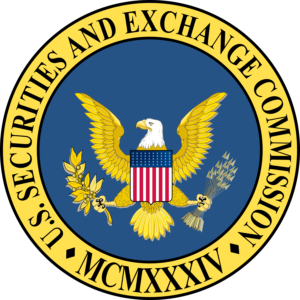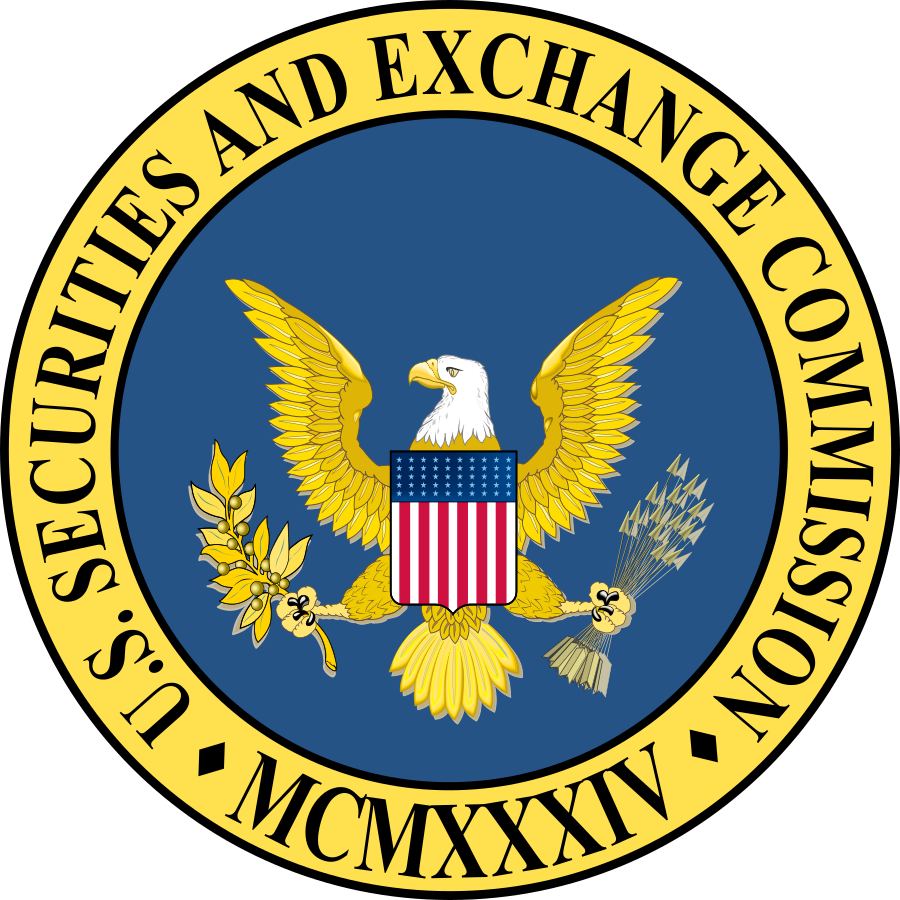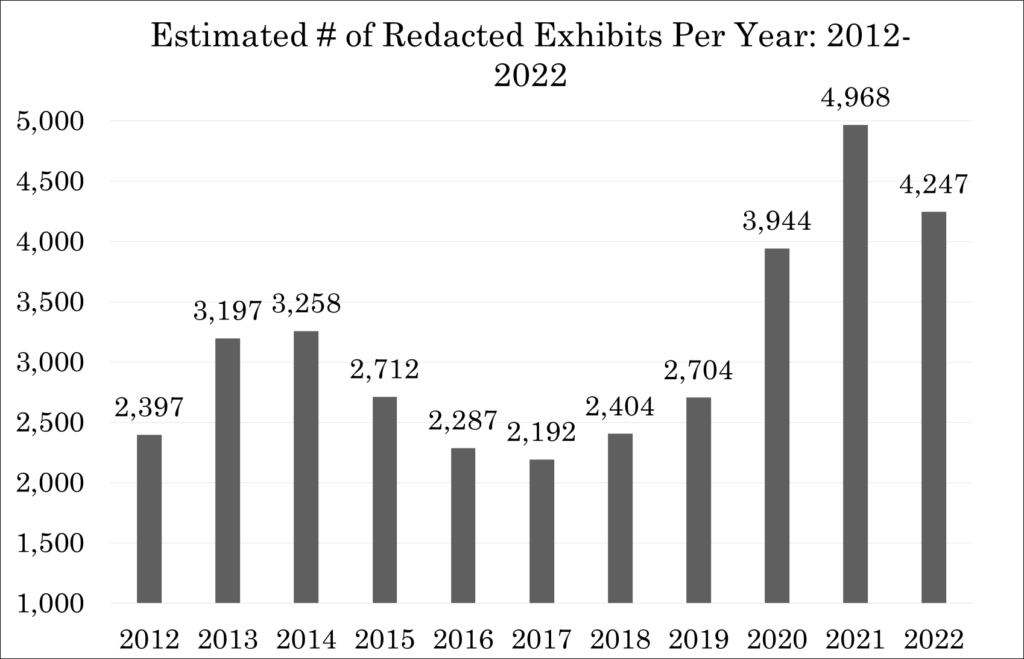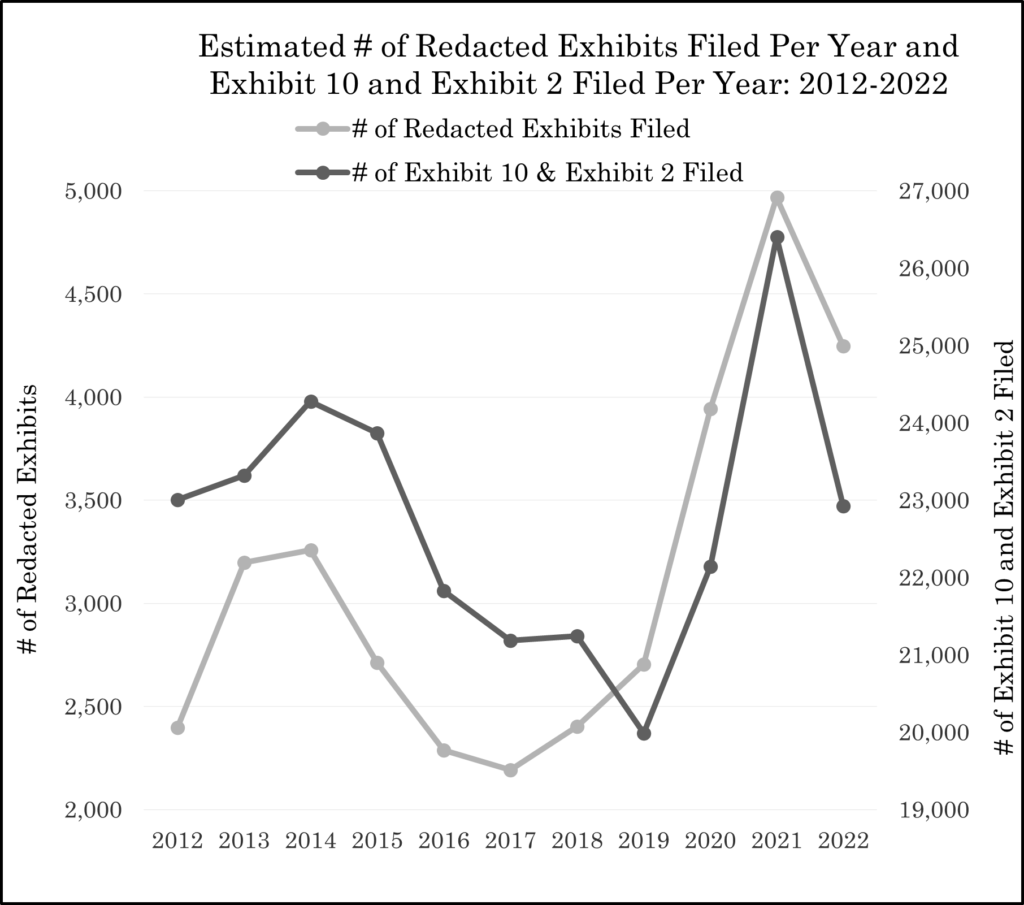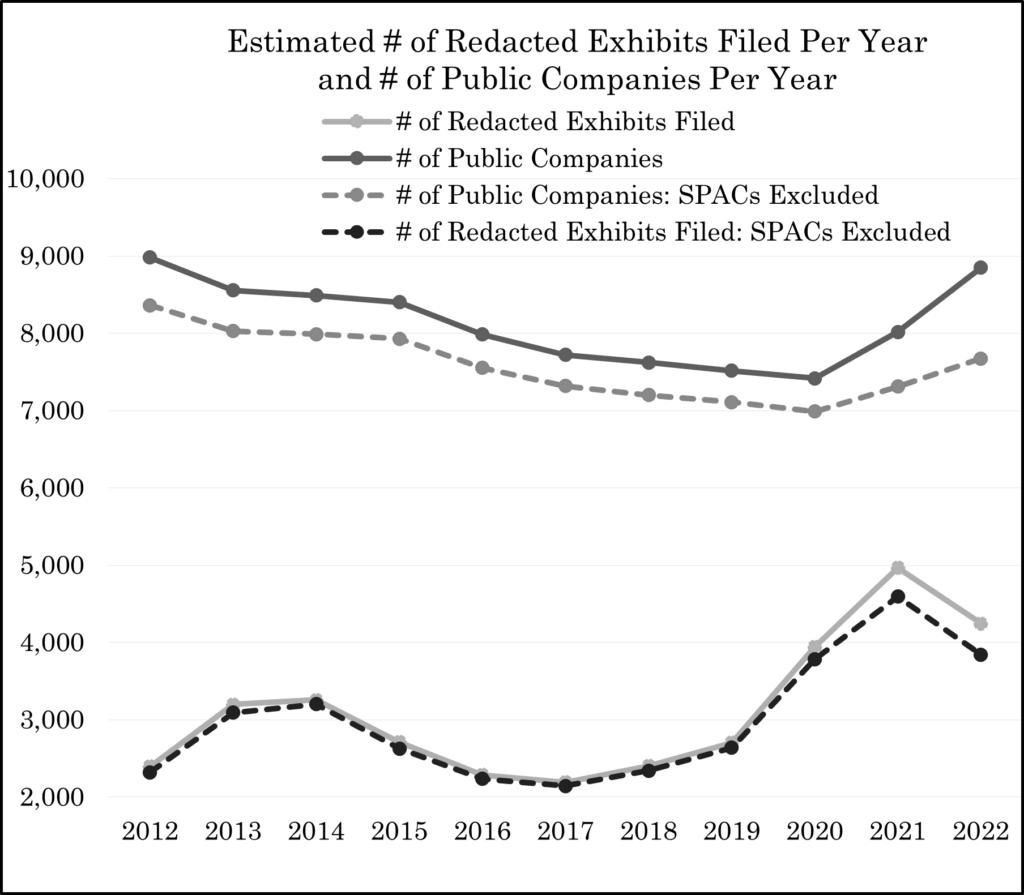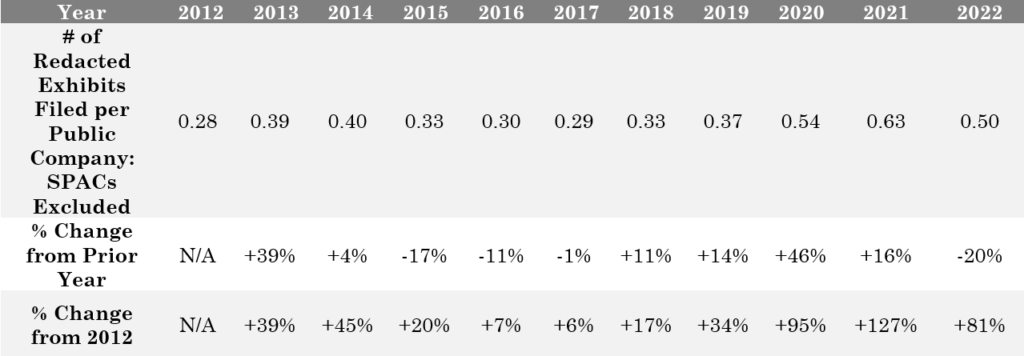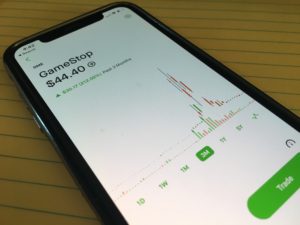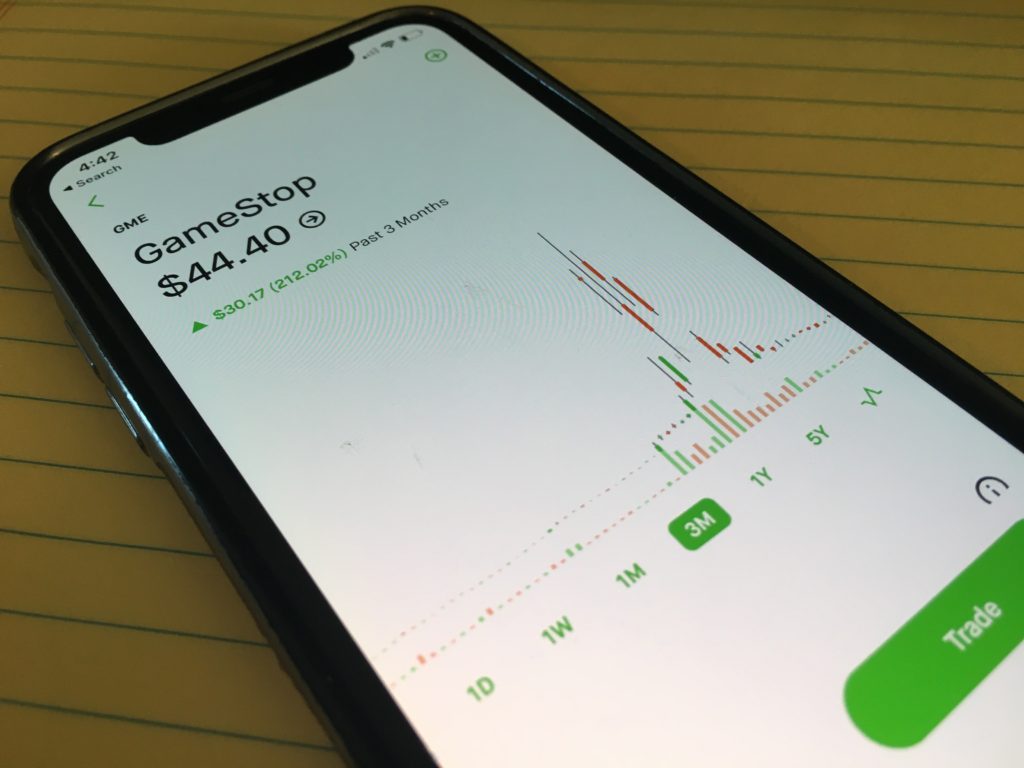
By Elizabeth A. Napps
The end of January 2021 brought a few trending headlines. We all expected to see stories of President Joe Biden’s inauguration, if not breakout star poet Amanda Gorman. The unexpected story, however, came the following week when Americans were reminded of the existence of GameStop and learned all about “stonks.” To the uninitiated, the term “stonks” references a popular meme poking fun at the unpredictability and (in)sanity of the stock market.[1] Another new household name was the Reddit forum “r/wallstreetbets,” which is self-described as “a community for making money and being amused while doing it.”[2] Users of the subreddit coordinated to purchase previously unpopular stocks, most notably GameStop, ultimately leading to a “10-day realized volatility [of] 308%” just prior to the market opening on January 26, 2021.[3] By the close of trading on January 27, 2021, the stock price had increased by 1,915 percent from the beginning of the year.[4]
As GameStop stock surged throughout the week, the Securities and Exchange Commission (the “SEC”) and the White House acknowledged monitoring market volatility to “maintain fair, orderly, and efficient markets . . . .”[5] In response to the volatility, trading apps including Robinhood Markets, Inc. (“Robinhood”) placed temporary pauses on trading of the affected stocks.[6] Two days after its first statement, the SEC, without naming any specifics, again acknowledged its close review of the “actions taken by regulated entities that may disadvantage investors or otherwise unduly inhibit their ability to trade certain securities;” pledged to protect investors from “abusive or manipulative trading activity that is prohibited by the federal securities laws;” and cautioned investors against participating in such activity.[7]
There has been extensive fallout and speculation about what actions the SEC may take against individual traders and platforms like Robinhood, but what does it all mean? What is really likely to happen?
Individual Traders
The Securities Exchange Act of 1934 (the “Exchange Act”) was enacted to regulate and control transactions in securities and “insure the maintenance of fair and honest markets in such transactions.”[8] Although anyone can invest in the stock market, there are some regulations that must be followed. Primary among them here is the prohibition of market manipulation. Under Section 9 of the Exchange Act, it is unlawful for a person to effect any transaction in a security to “creat[e] a false or misleading appearance of active trading in any security . . . or a false or misleading appearance with respect to the market for any such security . . . .”[9] Although the Commodity Futures Trading Commission has separately recognized a four-part test regarding manipulation,[10] the SEC’s definition of “market manipulation” remains in flux to a degree.[11]
Although it may take months or years for the SEC to complete any investigation, enforcement actions, or criminal prosecutions against Reddit investors appear unlikely except in exigent circumstances.[12] For example, Massachusetts is investigating one high profile Redditor, Keith Gill, for a possible violation of state securities regulations because he has a higher fiduciary duty as a registered broker-dealer and previously worked for MassMutual.[13] After his identification, Gill became the face of early investors who helped increase the popularity of GameStop stock, with even the House Committee on Financial Services calling him to testify during its hearings about recent market volatility.[14] Gill testified that his only involvement in the GameStop trading was as an amateur investor sharing his ideas solely for the educational value, not manipulation.[15]
Generally, Redditors were largely transparent about their motives and any charge against them would diverge from a typical SEC case.[16] Although some have characterized the trading as a “pump and dump scheme,” wherein promoters first “try to [pump up] the price of a stock with false or misleading statements” before “selling their own holdings of the stock [and] dumping shares into the market,”[17] questions linger over whether any false or misleading transactions were ever actually made.[18] Many later investors were evidently joining the bandwagon of rising stock prices and excited to see if their efforts could disrupt Wall Street.[19] Considering the high volume of media coverage, the most likely enforcement targets would be early investors and participants in the Reddit forum, like Gill.[20] Although the SEC would need to match the individual traders to posts on Reddit, this would likely not be an impossible feat.[21] On the whole, the consensus among observers remains that it would be difficult to prove a case against the typical Reddit investor.[22]
Robinhood and Other Platforms
In the wake of Robinhood and other platforms temporarily freezing trading on the suspect stocks, an immediate uproar resulted in over thirty lawsuits against the company[23] and bipartisan congressional calls to investigate.[24] For its part, Robinhood said that the “halting of buy orders and leveraged trading” was “entirely about market dynamics and clearinghouse requirements.”[25] Robinhood CEO Vlad Tenev repeated this refrain while testifying to Congress about the company’s actions.[26] Indeed, former SEC chief economist Chester Spatt told Yahoo Finance that this action was actually an example of the regulations working, because the firm needed to halt trading in order to make sure the high volume of trades could be covered.[27]
Observers also emphasize that Robinhood’s Customer Agreement (the “Agreement”) with each user allows for this action.[28] The Agreement includes provisions about the clearance of trades, Robinhood’s right to “prohibit or restrict the trading of securities” at its discretion, and even an arbitration agreement.[29] Furthermore, the Agreement includes a provision about applicable laws and regulations, which permits Robinhood to not complete “any transaction it believes would violate any federal or state law, rule or regulation or the rules or regulations of any regulatory or self-regulatory organization.”[30] Based on the SEC’s acknowledgement of market volatility and the suspect nature of the increased trading on the securities at issue, it is plausible that Robinhood could rely on this provision as well. In an early indication that courts would be likely to side with Robinhood, the Central District of California recently denied a request for a temporary restraining order that would have forced Robinhood “to abstain from any further limitations on trading in any stock . . . .”[31]
Future Impact
Although much of the conversation is centered on what already occurred, there remains a question of what may happen to future investors. There is already some indication that the SEC is watching social media more closely and may be inclined to take action against future attempts by a subreddit or other congregation of amateur traders to spearhead a pump and dump scheme. On February 11, 2021, the SEC enacted a two-week trading suspension for SpectraScience, Inc. (“SCIE”) under section 12(k) of the Exchange Act.[32] Although this action was in part because the corporation is inactive, the SEC further acknowledged that “since late January 2021, certain social media accounts may be engaged in a coordinated attempt to artificially influence SCIE’s share price . . . .”[33] This suggests a new inclination by the SEC to suspend trading where social media activity may have contributed to market manipulation.[34] A former SEC senior trial counsel hypothesized that the SEC did not halt trading on GameStop because of an “inability to identify an actionable violation of the federal securities laws . . . .”[35] Although that may have been true with regards to GameStop and other similarly situated stocks, this was evidently not the case with SCIE.
In addition to the SEC’s seemingly new willingness[36] to suspend trading in part because of social media influence, prospective traders should also be cautious of joining similar Reddit-led stock purchases because it is clear they work. Certainly, social media-inspired investing seems to be becoming a trend. Indeed, r/wallstreetbets currently boasts over 9.2 million users[37] and a recent Elon Musk tweet of an investment meme garnered a million likes.[38] Although famous investors like Musk are at more risk of being investigated for illegal stock touting, it is not inconceivable the SEC would choose to investigate other traders as well.[39] Continued market volatility of this sort may soon appear to be a premeditated, coordinated plan by Redditors and the like to drive stock prices up in manipulative schemes. A savvy investor would be wise to avoid jumping on the bandwagon.[40]
[1] Jordan Weissmann, What We Talk About When We Talk About Stonks, Slate (Jan. 28, 2021, 3:53 PM), https://slate.com/business/2021/01/stonks-not-stocks-got-it.html (describing “stonks” as “an exclamation . . . that you don’t take any of this finance stuff too seriously, that you are in it as much for the [laughs] as the opportunity to actually make a buck”).
[2] The WSB FAQ, Reddit, https://www.reddit.com/r/wallstreetbets/wiki/faq (last visited Feb. 22, 2021). For an inside view about the attitudes of some Redditors, see Caitlin McCabe, A Week Inside the WallStreetBets Forum That Launched the GameStop Frenzy, Wall St. J. (Feb. 13, 2021, 2:41 PM), https://www.wsj.com/articles/a-week-inside-the-wallstreetbets-forum-that-launched-the-gamestop-frenzy-11613212202?mod=hp_lista_pos2.
[3] Matt Levine, GameStop Is Just a Game, Bloomberg (Jan. 26, 2021, 12:14 PM), https://www.bloomberg.com/opinion/articles/2021-01-26/will-wallstreetbets-face-sec-scrutiny-after-gamestop-rally.
[4] Dean Seal, White House, SEC “Monitoring” Volatile GameStop Stock, Law360 (Jan. 27, 2021, 9:07 PM), https://www.law360.com/articles/1349195.
[5] Public Statement, Sec. & Exch. Comm’n, Joint Statement Regarding Ongoing Market Volatility (Jan. 27, 2021), https://www.sec.gov/news/public-statement/joint-statement-ongoing-market-volatility-2021-01-27; see also Seal, supra note 4.
[6] Tucker Higgins, Lawmakers from AOC to Ted Cruz Are Bashing Robinhood Over Its GameStop Trading Freeze, CNBC (Jan. 28, 2021, 5:17 PM), https://www.cnbc.com/2021/01/28/gamestop-cruz-ocasio-cortez-blast-robinhood-over-trade-freeze.html. Affected stocks on Robinhood included GameStop, American Airlines, AMC, BlackBerry, Bed Bath & Beyond, Castor Maritime, Express, Koss, Nokia, Sundial Growers, Tootsie Roll Industries, and trivago. Id.
[7] Public Statement, Sec. & Exch. Comm’n, Statement of Acting Chair Lee and Commissions Peirce, Roisman & Crenshaw Regarding Recent Market Volatility (Jan. 29, 2021), https://www.sec.gov/news/public-statement/joint-statement-market-volatility-2021-01-29?source=content_type%3Areact%7Cfirst_level_url%3Anews%7Csection%3Amain_content%7Cbutton%3Abody_link; see also Investor Alert: Thinking About Investing in the Latest Hot Stock?, Sec. & Exch. Comm’n (Jan. 30, 2021), https://www.sec.gov/oiea/investor-alerts-and-bulletins/risks-short-term-trading-based-social-media-investor-alert (cautioning potential investors about the risks of following social media trends).
[8] 15 U.S.C. § 78b, https://www.govinfo.gov/content/pkg/USCODE-2018-title15/pdf/USCODE-2018-title15-chap2B-sec78b.pdf.
[9] 15 U.S.C. § 78i(a), https://www.govinfo.gov/content/pkg/USCODE-2018-title15/pdf/USCODE-2018-title15-chap2B-sec78i.pdf.
[10] Prohibition on Price Manipulation, 76 Fed. Reg. 41,398, 41,407 (July 14, 2011) (to be codified at 17 C.F.R. § 180.2), https://www.govinfo.gov/content/pkg/FR-2011-07-14/pdf/2011-17549.pdf (confirming that the Commission will apply a four-part test developed in case law: “(1) That the accused had the ability to influence market prices; (2) that the accused specifically intended to create or effect a price or price trend that does not reflect legitimate forces of supply and demand; (3) that artificial prices existed; and (4) that the accused caused the artificial prices.”).
[11] See Alexis Keenan, Will the SEC Sue GameStop Traders? The Case Could Pose a ‘Super Weird’ Challenge, Yahoo Fin. (Jan. 28, 2021), https://finance.yahoo.com/news/will-the-sec-sue-gamestop-traders-183845241.html; Levine, supra note 3 (“Nobody knows what this means.”).
[12] Bruce Brumberg, Investigations Into GameStop Trading and Reddit: Former SEC Enforcement Chief Provides Insights, Forbes (Feb. 9, 2021, 10:00 AM), https://www.forbes.com/sites/brucebrumberg/2021/02/09/investigations-into-gamestop-trading-and-reddit-former-sec-enforcement-chief-reveals-insights/ (suggesting that registered financial advisors or those engaging in illegal touting may be targeted by the SEC).
[13] Andy Rosen, Regulators Subpoena Mass. Resident ‘Roaring Kitty’ Regarding GameStop Saga, Bos. Globe (Feb. 9, 2021, 6:06 PM), https://www.bostonglobe.com/2021/02/09/business/mass-regulators-subpoena-local-man-known-roaring-kitty-gamestop-saga/. Keith Gill was separately named a defendant in a proposed class-action lawsuit for allegedly misleading investors through his YouTube channel, though he maintains his innocence. Christian Berthelsen, “Roaring Kitty” Sued for Securities Fraud Over GameStop Rise, Bloomberg (Feb. 17, 2021, 12:31 PM), https://www.bloomberg.com/news/articles/2021-02-17/-roaring-kitty-sued-for-securities-fraud-over-gamestop-rise (noting the case is Iovin v. Gill, No. 21-cv-10264, D. Mass. (Springfield)).
[14] See Nathaniel Popper, Reddit’s ‘Roaring Kitty’ Will Speak at GameStop Hearing, N.Y. Times (Feb. 12, 2021), https://www.nytimes.com/2021/02/12/business/gamestop-hearing-roaring-kitty.html. This is the first of three hearings about market volatility, with the SEC expected to feature in the future. See @RepMaxineWaters, Twitter (Feb. 19, 2021, 5:48 PM), https://twitter.com/RepMaxineWaters/status/1362896862957756418.
[15] Game Stopped? Who Wins and Loses When Short Sellers, Social Media, and Retail Investors Collide: Hearing Before the H. Comm. on Fin. Servs., 117th Cong. (2021), https://docs.house.gov/meetings/BA/BA00/20210218/111207/HHRG-117-BA00-Wstate-GillK-20210218.pdf (statement of Keith P. Gill).
[16] See Brumberg, supra note 12; see also Keenan, supra note 11 (noting a case could “unravel” because the traders “appear to have acted openly”).
[17] Pump and Dump Schemes, Sec. & Exch. Comm’n, https://www.investor.gov/protect-your-investments/fraud/types-fraud/pump-and-dump-schemes (last visited Feb. 22, 2021) (cautioning that investors lose money once shares flood the market and drive the price per share down). The volatility in the market led to a “short squeeze,” which occurs when stock prices surge, forcing short sellers, who predicted the price would drop, to purchase the stock to protect themselves from further losses, thus increasing the price even more. See April Joyner & Saqub Iqbal Ahmed, “GameStop Effect” Could Ripple Further as Wall Street Eyes Short Squeeze Candidates, Reuters (Jan. 28, 2021, 1:30 PM), https://www.reuters.com/article/us-retail-trading-shorts/gamestop-effect-could-ripple-further-as-wall-street-eyes-short-squeeze-candidates-idUSKBN29X2MG. Except in the most extreme cases of a “short squeeze,” the SEC rarely prosecutes for manipulation. See Complaint, Sec. & Exch. Comm’n v. Falcone, No. 12 CIV 5027 (S.D.N.Y. June 27, 2012), 2012 WL 2457466 (available at https://www.sec.gov/litigation/complaints/2012/comp-pr2012-122-2.pdf).
[18] See Brumberg, supra note 12; see also Yoel Minkoff, GameStop Rally: Is there a Case for Market Manipulation?, Seeking Alpha (Jan. 31, 2021, 9:09 AM), https://seekingalpha.com/news/3656452-gamestop-rally-is-there-a-case-for-market-manipulation (suggesting that “irrational exuberance” does not equate to “fraud and misinformation”).
[19] See Dave Michaels & Alexander Osipovich, “GameStop Stock Surge Tests Scope of SEC’s Manipulation Rules, Wall St. J. (Jan. 28, 2021, 7:49 AM), https://www.wsj.com/articles/gamestop-surge-tests-scope-of-secs-manipulation-rules-11611838175; see also McCabe, supra note 2 (describing some investors’ views); @elonmusk, Twitter (Jan. 26, 2021, 4:08 PM), https://twitter.com/elonmusk/status/1354174279894642703 (addressing the activity in a more mainstream outlet).
[20] See, e.g., Keenan, supra note 11 (“Regulators may have more success targeting the buying behavior that took place at the very beginning of the effort, [Michigan School of Law professor Gabriel Rauterberg] said.”).
[21] Id.
[22] See Minkoff, supra note 18 (quoting Duke Law Prof. Gina-Gail S. Fletcher as saying, “[t]he statutory provisions and the case law related to [market manipulation] are all over the place and they don’t favor the SEC”); see also Brumberg, supra note 12 (“[I]t could be tough to prove [a] case.”).
[23] Mengqi Sun, Robinhood Faces Civil Lawsuits Over Trading Restrictions, Wall St. J. (Feb. 3, 2021, 3:32 PM), https://www.wsj.com/articles/robinhood-faces-civil-lawsuits-over-trading-restrictions-11612384364?page=1.
[24] Higgins, supra note 6.
[25] Ethan Wolff-Mann, Robinhood “Didn’t Change the Rules” on Users Amid Market Mayhem, Former SEC Economist Explains, Yahoo Fin. (Jan. 29, 2021), https://www.yahoo.com/lifestyle/robinhood-didnt-change-the-rules-chester-spatt-204321652.html (quoting Robinhood CEO Vlad Tenev). Clearinghouses serve as intermediaries between buyers and sellers in the transfer of securities, and may ask members to front more money, called margin, in the event of volatile market and risky trades. See Telis Demos, Why Did Robinhood Ground GameStop? Look at Clearing, Wall St. J. (Jan. 29, 2021, 7:33 PM), https://www.wsj.com/articles/how-clearing-demands-grounded-the-wallstreetbets-stocks-for-a-day-11611966092?mod=article_inline (explaining why a broker like Robinhood would choose to suspend trading in the face of a possible margin call).
[26] Game Stopped? Who Wins and Loses When Short Sellers, Social Media, and Retail Investors Collide: Hearing Before the H. Comm. on Fin. Servs., 117th Cong. 8 (2021), https://financialservices.house.gov/uploadedfiles/hhrg-117-ba00-wstate-tenevv-20210218.pdf (statement of Vladimir Tenev, CEO, Robinhood Markets, Inc.).
[27] Wolff-Mann, supra note 25.
[28] See id.; Jeff John Roberts, Robinhood is Being Sued Over the GameStop Meltdown. Do Investors Have a Case?, Fortune (Jan 28, 2021, 07:44 PM), https://fortune.com/2021/01/28/robinhood-class-action-lawsuit-gamestop-gme-amc-stocks-walstreetbets-halted-purchasing/ (suggesting that the lawsuits may just be a tactic to reach a quick settlement in the face of an “uphill” legal battle).
[29] Robinhood Financial LLC & Robinhood Securities, LLC Customer Agreement, Robinhood 8, 11, 29 (last updated Dec. 30, 2020), https://cdn.robinhood.com/assets/robinhood/legal/Robinhood%20Customer%20Agreement.pdf.
[30] Id. at 9.
[31] Dean Seal, Early Robinhood Ruling Marks Rocky Start for Traders’ Suits, Law360 (Feb. 11, 2021, 8:30 PM), https://www.law360.com/securities/articles/1354013/early-robinhood-ruling-marks-rocky-start-for-traders-suits (noting that Judge Virginia Phillips held that the plaintiff trader “failed to establish a likelihood of success on the merits”).
[32] In re SpectraScience, Inc., File No. 500-1 (Feb. 10, 2021), https://www.sec.gov/litigation/suspensions/2021/34-91101-o.pdf; see also 15 U.S.C. § 78l(k), https://www.govinfo.gov/content/pkg/USCODE-2018-title15/pdf/USCODE-2018-title15-chap2B-sec78l.pdf.
[33] Id.
[34] Seal, supra note 4.
[35] Id. (quoting Nick Morgan).
[36] This is not the first time the SEC has taken a close look at social media and message boards. See, e.g., Press Release, Sec. & Exch. Comm’n, SEC Brings Fraud Charges in Internet Manipulation Scheme (Sept. 20, 2000), https://www.sec.gov/news/press/2000-135.txt (reaching a settlement with an investor accused of online market manipulation; Nicholas Groom, Whole Foods CEO Sorry for Anonymous Web Posts, Reuters (July 17, 2007, 7:10 PM), https://www.reuters.com/article/us-wholefoods/whole-foods-ceo-sorry-for-anonymous-web-posts-idUSN1725360820070718 (acknowledging an SEC probe into deceptive posts made online). One difference between the message boards of the 1990s and today is the much larger scale. See generally Brian Cheung, Before WallStreetBets: A History of Online Message Boards and ‘Stonks’, Yahoo Fin. (Feb. 2, 2021), https://www.yahoo.com/now/before-wall-street-bets-a-history-of-online-message-boards-and-stonks-134818361.html.
[37] See Reddit, supra note 2.
[38] @elonmusk, Twitter (Feb. 4, 2021, 2:57 AM), https://twitter.com/elonmusk/status/1357236825589432322.
[39] 15 U.S.C. § 77q(b); see Brumberg, supra note 12 (cautioning that “stock-promotional efforts” may result in liability under Section 17(b) of the Securities Act of 1933, which is a strict liability statute not requiring a finding of fault).
[40] From a practical perspective, many investors, especially novices, lost significant amounts of money by joining the investment rollercoaster at the apex. See Drew Harwell, As GameStop Stock Crumbles, Newbie Traders Reckon with Heavy Losses, Wash. Post (Feb. 2, 2021, 5:34 PM), https://www.washingtonpost.com/technology/2021/02/02/gamestop-stock-plunge-losers/.


